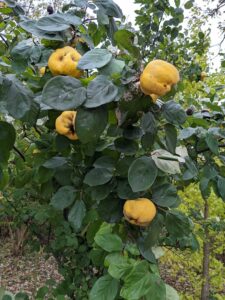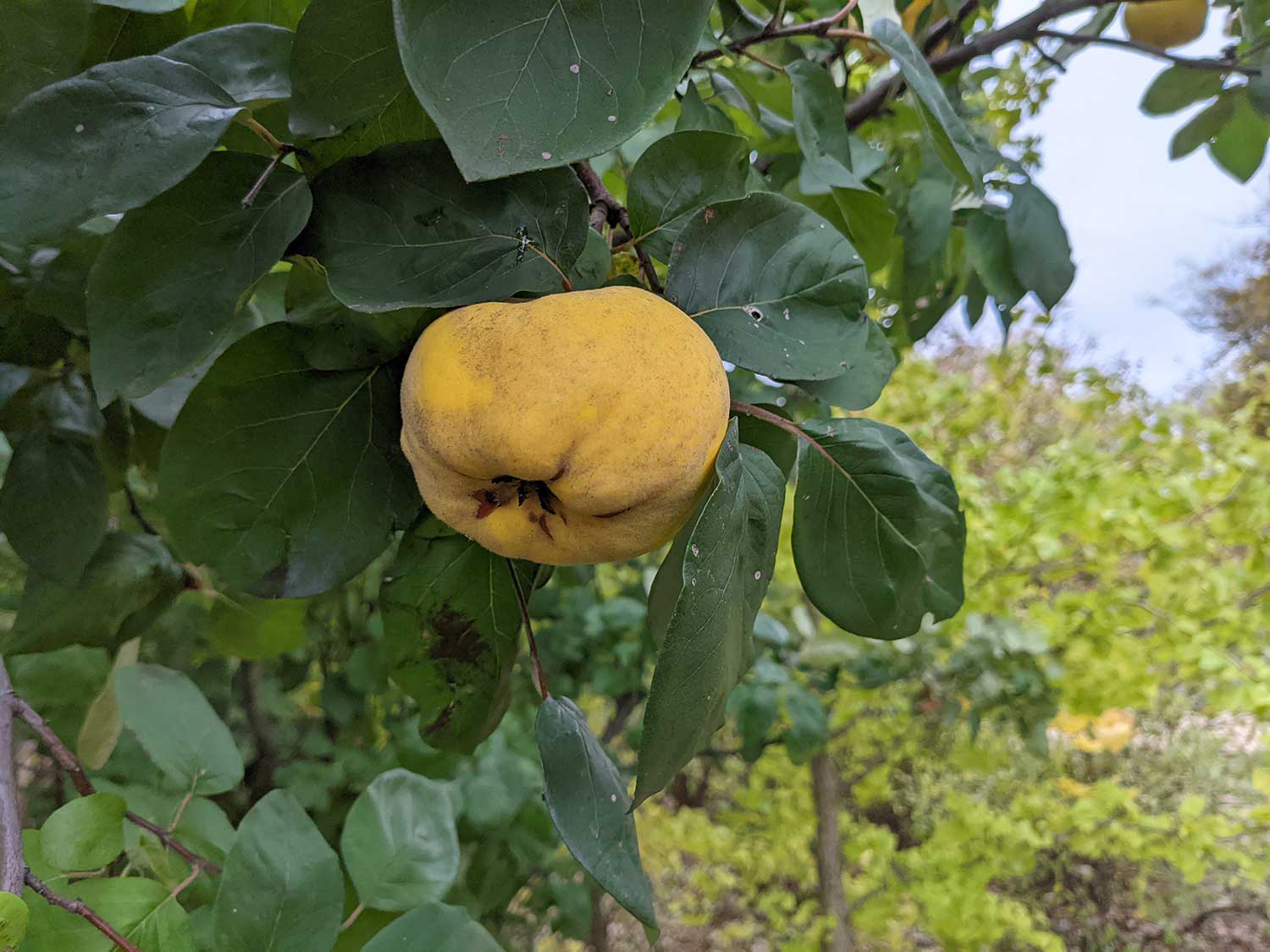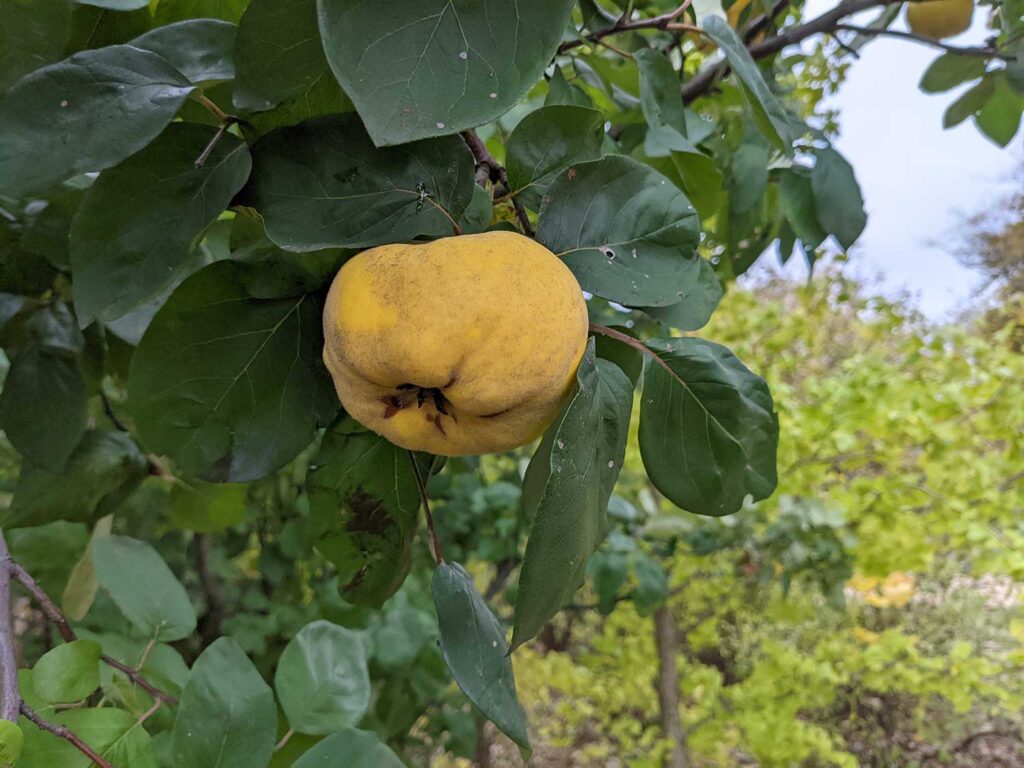 Cydonia oblonga, or fruiting Quince, are a member of the Rosaceae (Rose) family, which includes roses, apples, and pears amongst other lovely plants. In the past, Quince have not often been seen in local grocery stores. Thank goodness that appears to be changing and they can be found more often. As the fruit does not keep well over time, late fall signals the time to watch for their appearance, so purchase while they are available.
Cydonia oblonga, or fruiting Quince, are a member of the Rosaceae (Rose) family, which includes roses, apples, and pears amongst other lovely plants. In the past, Quince have not often been seen in local grocery stores. Thank goodness that appears to be changing and they can be found more often. As the fruit does not keep well over time, late fall signals the time to watch for their appearance, so purchase while they are available.
Quince are a nutritious fruit high in fiber and nutrients, yet low in calories. Originating in the Caucasus region, it has spread around the globe and insinuated itself into the food cultures of many countries. It is a fruit high in natural pectin, responding well to turning into jams, jellies, and sauces. When peeled, cored, sliced, and cooked in a bit of lightly sugared water, the flesh turns from a creamy white to a pinkish hue. Cooking also transforms the astringent, hard, and spongy raw flesh into a soft, delicious, fruity-floral tasting fruit. Although it can be eaten raw, one may want to start slowly and work into developing a taste for it.
This underrated fruit crop can be grown easily in many areas of the United States. It requires a handful of specific site characteristics, but then get out of the way and let it grow. As with most fruit crops, full sun, adequate moisture, good drainage, nice fertility, and plenty of air flow will see you through to success. Soil pH needs are a neutral 7.0 to somewhat acidic. If the growing site is lacking in any of those key components, compensate as best as possible and watch for weakness. Remediate where possible, asking for professional help when needed.
Prune as for most fruit trees: open enough for light penetration and good air flow. Maturation to fruiting is around four to five years after planting. Shape the tree during that growth and development time, aiming for keeping it open and under control while it reaches toward the mature size of 10’ to 15’ around. Quince are self-fruitful (pollination occurs with itself), so it is not necessary to plant more than one if space is limited. But most self-fruitful trees will produce heavier crops when planted near another in the same species.
The fruit shape can be round, or somewhat pear-shaped, but it will always be delightfully lumpy in appearance. When ripe and ready for harvesting, the fuzzy skinned fruit turns a beautiful golden yellow and the fragrance emitted wafts shades of vanilla and summer flowers to the nose. A pleasant late fall reminder of what summer used to be.

